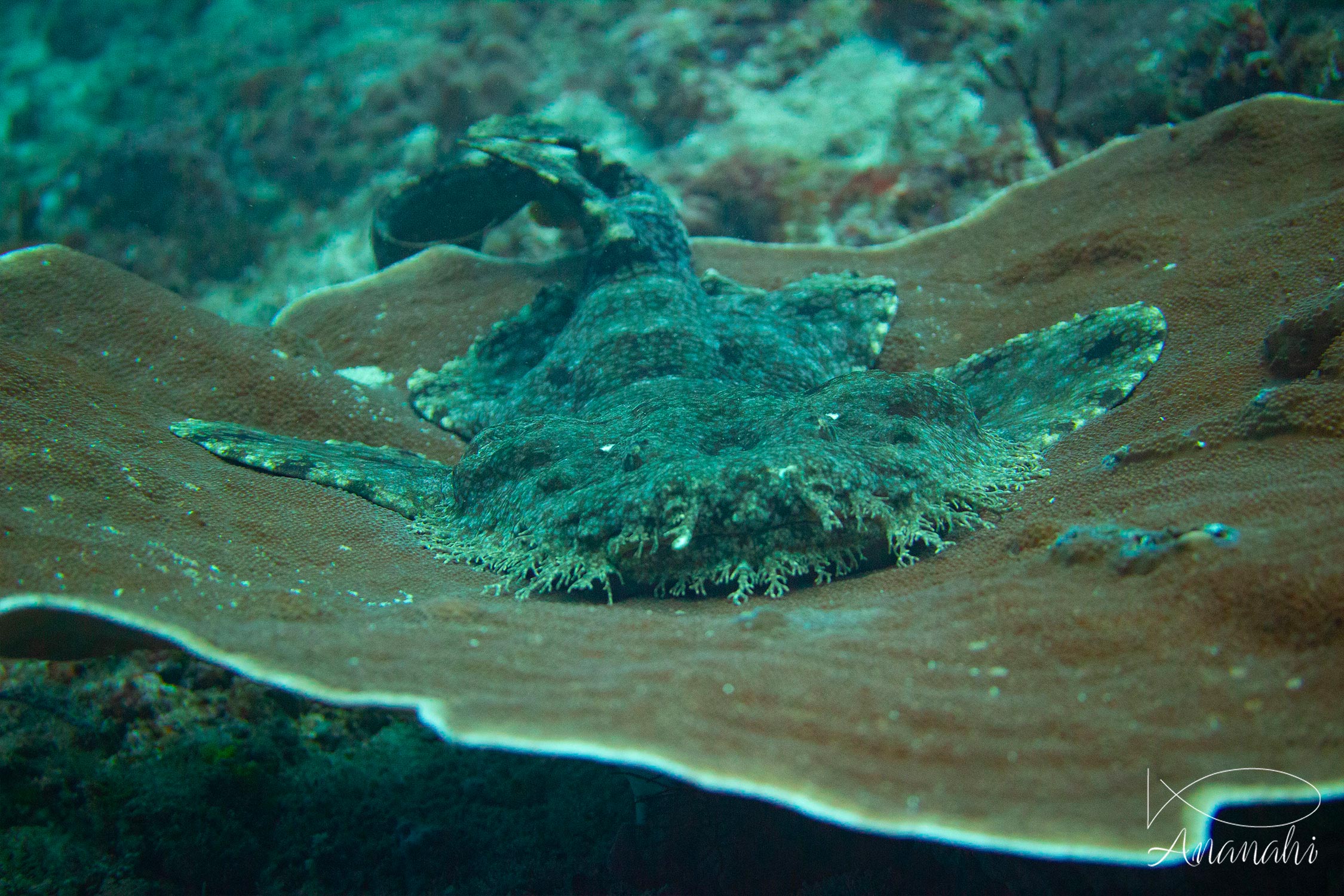
Scientific name: Orectolobus
Size: The majority is about 4,1 feet, but some subspecies can be up to 10 feet (spotted wobbegong and banded wobbegong)
Color: Brown grey
Distinguishing feature: Very flat, with growths under the mouth reminiscent of a mustache
Where did we see it: Raja Ampat

Scientific name: Orectolobus
Size: The majority is about 4,1 feet, but some subspecies can be up to 10 feet (spotted wobbegong and banded wobbegong)
Color: Brown grey
Distinguishing feature: Very flat, with growths under the mouth reminiscent of a mustache
Where did we see it: Raja Ampat
The wobbegong shark is a passive shark, which is often seen inactive at the bottom of the water, often placed on a coral allowing it to lie down. It can also be found under a rock allowing to hide
It fur makes it easy to hide, so it can be hard to find even when you're next to it. It name is also carpet fish because of this fur.
This shark will move more easily at night, searching for prey, often attacking or ambushing small fish.
It is a shark that can be very lively, despite its appearance.
The whale shark is the largest fish in the world!
Some whales are larger, but they are mammals, not fish!
The tiger shark has slender marks similars to the lines of tigers, hence its name.
When it is juvenile, these marks are round and not vertical. They change when it grows.
Turtles are in economy mode when they are sleeping. If they are woken during night, they may not have enough air to return to surface.
So, please be careful during night dives!